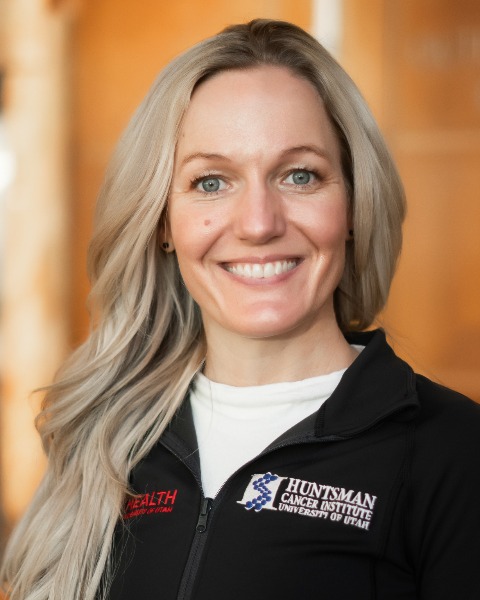Nursing Symposium
Poster Session 1
NSP-02: Clinical Trial Enrollment at a National Cancer Institute Cancer Center in the US Mountain West
Wednesday, September 27, 2023
1:30 PM - 2:30 PM EEST

Carrie L. Bellerive, BS, RN, BMTCN
Blood & Marrow Transplant and Cellular Immunotherapy Nurse Coordinator
Huntsman Cancer Institute
Sandy, Utah, United States
Introduction: Despite advances in the treatment of multiple myeloma (MM) through clinical trials, equitable trial enrollment which accurately reflects the landscape of the disease remains challenging. Research in MM has uncovered disparities with regard to patient age, race/ethnicity, rural-urban residence, socioeconomic status, insurance type, and underrepresentation in clinical trials. Huntsman Cancer Institute (HCI) located in Salt Lake City, Utah, is the only NCI-Designated Cancer Center in the Mountain West and a critical access point for clinical trials. Our catchment area includes six states and 525,000 square miles. Travel to large centers can be associated with financial toxicity and social stress which adversely affect health-related quality of life in MM. Beyond Salt Lake City boundaries is mostly considered rural for health access; additionally, patients living in these areas are at risk for being uninsured or under-insured. Herein we describe our enrollment for clinical trials as it pertains to rurality with consideration of insurance status.
Methods: A list of enrolled subjects in MM or AL-amyloid clinical trials from January 2018 to April 2023 was compiled to evaluate geographical and rural enrollment patterns among these niche patient populations at HCI. A randomized identifier was created and patient information appended, including: zip code and residence distance to HCI, age, sex, and insurance status. Zip codes were used to determine county and deemed rural versus not rural according to the Federal Office of Rural Health Policy (FORHP). Descriptive statistics were utilized.
Results: A total of 97 patients were enrolled in clinical trials; a majority being males (57%) and only 3% of enrollees having AL-amyloidosis. Medicare or Medicaid comprised 43%, private insurance 53%, and 4% were uninsured. Based on county of residence, 18% were rural while 82% were not. A majority of rural patients (65%) had Medicare and the remainder had private insurance. Amongst the 97 patients enrolled, the majority (52%) lived within 20 miles of the cancer center, and 73% of patients lived within 40 miles. Twelve percent of patients lived within 41-80 miles of the cancer center, whereas only 15% of patients enrolled on trials lived over 80 miles away.
Conclusions: Our study shows that most patients with MM or AL-amyloid enrolled on trials at our NCI-designated cancer center in the Mountain West live within an 80-mile radius. With an understanding of historical patient demographics, we aim to improve access to our clinical trials in the next five years. This will be accomplished by increasing patient support group topic frequency about open clinical trials, expanding our trial portfolio, testimonies from existing trial patients within existing support groups, and increased utilization of our existing Rural Patient Navigator in trial screening processes. Future directions include research to better understand the reasons rural patients decline participation in clinical trials.
Methods: A list of enrolled subjects in MM or AL-amyloid clinical trials from January 2018 to April 2023 was compiled to evaluate geographical and rural enrollment patterns among these niche patient populations at HCI. A randomized identifier was created and patient information appended, including: zip code and residence distance to HCI, age, sex, and insurance status. Zip codes were used to determine county and deemed rural versus not rural according to the Federal Office of Rural Health Policy (FORHP). Descriptive statistics were utilized.
Results: A total of 97 patients were enrolled in clinical trials; a majority being males (57%) and only 3% of enrollees having AL-amyloidosis. Medicare or Medicaid comprised 43%, private insurance 53%, and 4% were uninsured. Based on county of residence, 18% were rural while 82% were not. A majority of rural patients (65%) had Medicare and the remainder had private insurance. Amongst the 97 patients enrolled, the majority (52%) lived within 20 miles of the cancer center, and 73% of patients lived within 40 miles. Twelve percent of patients lived within 41-80 miles of the cancer center, whereas only 15% of patients enrolled on trials lived over 80 miles away.
Conclusions: Our study shows that most patients with MM or AL-amyloid enrolled on trials at our NCI-designated cancer center in the Mountain West live within an 80-mile radius. With an understanding of historical patient demographics, we aim to improve access to our clinical trials in the next five years. This will be accomplished by increasing patient support group topic frequency about open clinical trials, expanding our trial portfolio, testimonies from existing trial patients within existing support groups, and increased utilization of our existing Rural Patient Navigator in trial screening processes. Future directions include research to better understand the reasons rural patients decline participation in clinical trials.
